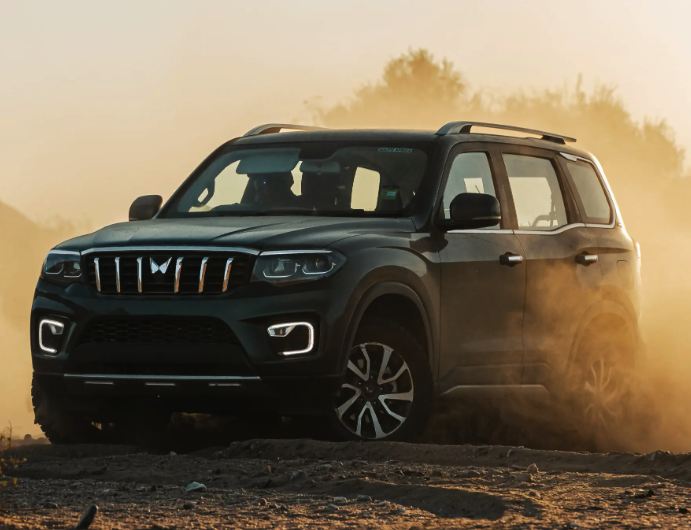Mahindra ute twinned with NZ-bound off-road wagon
/Update on model comes as donor Scorpio-N feels heat for lacking AEB.
AN imminent Mahindra sports utility wagon sparking controversy across the Tasman lends good insight into the makeup of a new generation of utility landing locally at end of 2024.
Sharing to media in South Africa, the make’s primary export market, of information and what appear to be official renders confirms a high degree of continuity between the Scorpio-N (above), an all-new sports utility wagon with off-road aptitude expected for New Zealand on-sale in May, and the next-generation of the Pik Up utility, also cited for Kiwi use but perhaps for not another 18 months.
The apparent new look (below) for the Pik Up is a bit shift. The model presents at the moment as a no-nonsense, utilitarian traydeck (lower of two images) that kicked off the Indian maker’s presence here 15 years ago and has for some periods since been its sole offer.
The latest information cements the link between the two, saying the SUV and utility are now the same vehicle under the skin. One has a boot, the other a traydeck.
While Mahindra has maintained an old-school approach with a body-on-frame chassis, by following this route leaves impression the Pik Up will be a larger, more comfortable and more sophisticated than the incumbent model, which spans from a $26,947 single cab chassis to a $37,393 four-wheel-drive dual cab well side, with seven versions listed on the make’s website.
The priority engine for Pik Up is a mHawk turbodiesel making 129kW and 400Nm, against 103kW and 320Nm presently, however there has been some talk of the type also going electric; a development also expected to occur with the SUV.
The diesel unit marries to a six-speed automatic, and at lower spec, a six-speed manual, in the choice of four-wheel-drive and rear-drive derivatives, again in single and double cab body styles.
The 4WD editions have electronic shift-on-the-fly, an intelligent terrain management and three drive modes.
When it comes to technology, though, the SUV donor has hit a road bump as it releases in Australia, following a timing ahead of that for New Zealand.
At the March 31 NZ introduction staged for the XUV700, a similar-looking but more road-bound – solely front-drive - alternate to the Scorpio N, Joydeep Moitra – the most senior brand representative to visit here – confirmed New Zealand and Australia will achieve common Mahindra products.
He explained then how supply to both countries will organise as a concurrent arrangement, but not initially, explaining that Mahindra had decided to give NZ first dibs on the XUV, and in turn allow Australia priority for Scorpio N’s avialability.
Explanation why was not given then, but has become apparent now. A big automotive news website across the Tasman, Drive.com.au, says that by installing Scorpio-N there now, the brand will establish the model before a rule change demanding life-saving technologies absent from the model.
The spotlight has fallen on the absence of autonomous emergency braking, which is designed to smash on the brakes if a crash is imminent and the driver is not paying attention and has become standard fare on new cars and light commercials, utilities and vans.
Autonomous emergency braking (AEB) became mandatory for all newly-introduced vehicles certified for sale in Australia from March 1.
The website claimed at the weekend that Mahindra has exploited a loophole that only requires the vehicle to receive approval for sale in Australia from the Federal Government before that deadline to be legally available for sale – even if cars do not arrive in showrooms until after that date.
For Australia, this means the type will not now not need to meet the requirement for AEB until March 2025, when the technology is required for all vehicles on sale across the Tasman, irrespective of when they were introduced or approved for sale.
The requirement here is different. While the lack of AEB means a vehicle cannot achieve a maximum five-star score in the Australian New Car Assessment Programme crash testing protocol whose scores have priority status here – in part because New Zealand part-funds ANCAP – it does not prohibit sale. That is why a base five-seater version of the XUV700 will sell in NZ but not Australia – that derivative also lacks AEB.
New vehicles without a recognised crash test standard are also rated under the RightCar scheme. That seems to be the outcome for Mahindra product here, as it is only crash tested by Global NCAP, an evaluation developed specifically for India and Africa, that is less stringent than ANCAP (or Euro NCAP) has no apparent standing here. Scorpio-N is the first body-on-frame product to receive a five star count from the GNCAP process.
ANCAP has indicated desire to have a locally-applicable safety rating available and has left impression it will crash test incoming Mahindra product, the organisation telling Drive: "We are liaising with the local distributor to determine the safety specification and availability of its forthcoming models, and the potential for testing and rating.”
The outgoing XUV and current Pik Up hold three star ANCAP ratings.
The Drive website says the Mahindra Scorpio-N will be the only model in the 'medium SUV' class without autonomous emergency braking – and likely the last all-new vehicle to launch in Australia without the technology.
Lane-keep assist, adaptive cruise control and blind-spot monitoring also seem to be absent, though it does take anti-lock brakes, stability control, tyre pressure monitors, a driver fatigue warning and has six airbags.




















